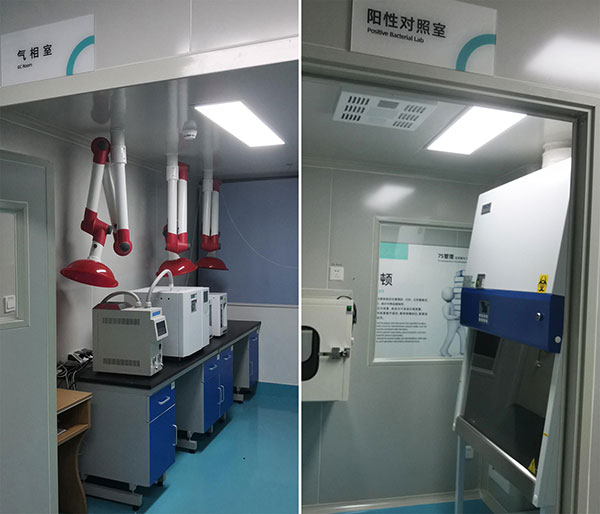Recently, the “Preparation Method for Biomedical Implantation Membrane Containing Polylactic Acid” technology, which was independently developed by Shenzhen eSUN Industrial Co., Ltd. and its subsidiary Shenzhen eSUNMed Biotechnology Co., Ltd. has passed the approval of the State Intellectual Property Office and won the Invention patent authorization. eSUN has applied for more than 90 national patents and obtained more than 60 patents so far, among which are mainly invention patents.

Recently, the “Preparation Method for Biomedical Implantation Membrane Containing Polylactic Acid” technology, which was independently developed by Shenzhen eSUN Industrial Co., Ltd. and its subsidiary Shenzhen eSUNMed Biotechnology Co., Ltd. has passed the approval of the State Intellectual Property Office and won the Invention patent authorization. eSUN has applied for more than 90 national patents and obtained more than 60 patents so far, among which are mainly invention patents.

PLGA and PLA have the same disadvantages: high strength and poor single toughness, which seriously affects the scope of the clinical application of PLGA. Therefore, the PLGA must be toughened.
On the other hand, medical implant materials containing polylactic acid and its various derivatives have been developed, and some have even been put into production and application. However, the existing related technologies generally have the following issues:
1. The permeability of the implanted membrane material prepared by conventional raw materials is poor, and the impact on the organism is strong after the material is implanted;
2. The implanted membrane materials prepared by conventional methods are easy to stick (including the membrane material itself and the large contact area with biological tissues), which basically directly prevents the application of materials in important tissue positions;
3. The degradation time of biomaterials is unstable, which is greatly affected, and the degradation time is uncontrollable, which is very unfavorable for subsequent recovery and treatment.
Based on the above, to solve the problems, our researchers decided to use the existing materials, especially the ones that have been widely developed or applied in the laboratory or clinic, and cooperate with innovative step parameters and other means to prepare unique internal and surface structures. The membrane materials prepared in this way can often show a variety of different characteristics and be used in different fields. Because the basic materials have passed laboratory or clinical verification without biological toxicity or other adverse effect, this risk can be avoided and they can be quickly put into application. Moreover, raw materials can be directly purchased or prepared by a variety of optional methods, which can also greatly reduce R&D and production costs.
Polycaprolactone (PCL) is a biopolymer material widely used in medical applications. It has the advantages of toughness and good biocompatibility as well as biodegradability. Therefore, compounding PLGA and PCL can effectively solve the problem of the poor toughness of PLGA. The composite membrane obtained by alternating electrospinning of PLGA and PCL has high strength and good toughness. There are regular cavities on the electrospinning layer of PLGA and PCL, which can prevent tissue from sticking. A certain degree of breathability and fluid permeability is beneficial for wound healing, which will help broaden the application range of PLGA.

вЦ≥¬†Medical polycaprolactone PCL
The medical implant patch produced by the above technology includes a bioactive body layer and a bioabsorbable polymer material layer covering both sides of the bioactive body layer. Through pretreatment and posttreatment, the surface structure of the multilayer structure membrane material is realized. And the change in the internal structure, and the surface structure of the prepared membrane material product can avoid adhesion, and the internal structure can effectively control the degradation rate with the specific interlayer relationship. The medical implant patch not only meets the basic characteristics that repair materials should have but also can induce tissue growth and has anti-adhesion effects. Antibacterial drugs and (or) anti-tumor drugs can be added to the bioactive body layer, according to the needs of patients. Carry out individualized treatment to achieve the purpose of targeted treatment with local administration.
The biomedical materials industry is developing rapidly. With the advancement of related technologies and the further optimization of material properties, it will play a greater role in future practical applications. Relying on the parent company eSUN in the research and development and application of polylactic acid, polycaprolactone and related copolymers for many years, Shenzhen eSUNMed can provide biomedical materials and equipment processing services for users in need. Please feel free to contact us if you show any interest.

Shenzhen eSUNMed has nearly 400 square meters of 100,000-level standard clean workshops and 1,000 square meters of 10,000-level purification laboratories, which meet the standard GMP workshops for the production of pharmaceutical excipients and sterile medical devices, and meet the industry standards for biomedical polymer materials. Moreover, with various advanced equipment, it can provide a stable guarantee for the research and development, production and application of enterprise products.

